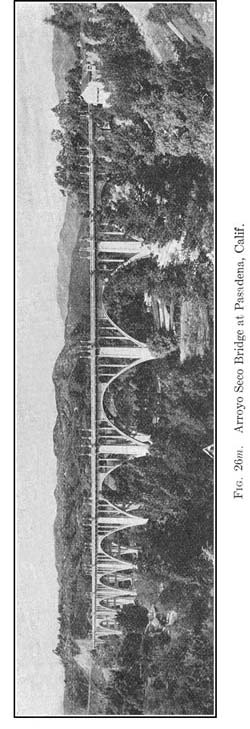| 248 | ECONOMICS OF BRIDGEWORK | Chapter XXVI |
|
Another illustration of the said conditions, in which the economic advan- rotate image tage of the arch is not so marked, is |
 |
the author's combined- highway- and- electric- railway bridge over the Colorado River at Austin, Texas, shown in Fig. 26n. Here the vertical distance from high-water to pier-base is considerable, thus rendering the piers much more expensive than those of the Pasadena structure. Where the foundation-level much below the river-bed, the conditions are not favorable to the arch; because, in order properly to resist the horizontal thrust, the piers have to be made much wider than those for simple-truss spans. Before concluding, it might be well to quote the following caution given by the author to those intending to utilize the information furnished in his memoir: The various formulae and diagrams in this paper are to be considered as merely approximate; and though they are sufficiently accurate for preliminary estimates and for obtaining trial dead loads, they should not be used by contractors in tendering on work. The reason for this uncertainty is that the varying physical conditions at different crossings affect the arch layouts to such an extent as materially to influence the weight of metal required. As the formulae were based on economic functions, the weights given by their use might very properly be considered as the minima possible; and any uneconomic conditions which may exist will involve an increase thereof, the amount being a matter to be determined by the computer's judgment. |